Astrocyte-dependent local neurite pruning in Beat-Va neurons
- PMID: 39652106
- PMCID: PMC11627112
- DOI: 10.1083/jcb.202312043
Astrocyte-dependent local neurite pruning in Beat-Va neurons
Abstract
Developmental neuronal remodeling is extensive and mechanistically diverse across the nervous system. We sought to identify Drosophila pupal neurons that underwent mechanistically new types of neuronal remodeling and describe remodeling Beat-VaM and Beat-VaL neurons. We show that Beat-VaM neurons produce highly branched neurites in the CNS during larval stages that undergo extensive local pruning. Surprisingly, although the ecdysone receptor (EcR) is essential for pruning in all other cell types studied, Beat-VaM neurons remodel their branches extensively despite cell autonomous blockade EcR or caspase signaling. Proper execution of local remodeling in Beat-VaM neurons instead depends on extrinsic signaling from astrocytes converging with intrinsic and less dominant EcR-regulated mechanisms. In contrast, Beat-VaL neurons undergo steroid hormone-dependent, apoptotic cell death, which we show relies on the segment-specific expression of the Hox gene Abd-B. Our work provides new cell types in which to study neuronal remodeling, highlights an important role for astrocytes in activating local pruning in Drosophila independent of steroid signaling, and defines a Hox gene-mediated mechanism for segment-specific cell elimination.
© 2024 Lehmann et al.
Conflict of interest statement
Disclosures: The authors declare no competing interests exist.
Figures
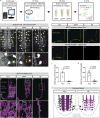

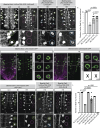
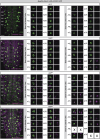
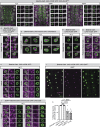
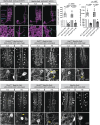
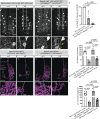

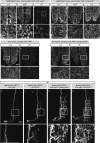
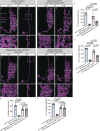
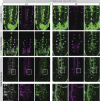
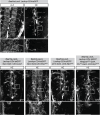
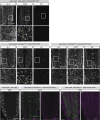
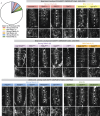
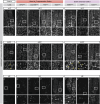
Similar articles
-
Ultraspiracle-independent anti-apoptotic function of ecdysone receptors is required for the survival of larval peptidergic neurons via suppression of grim expression in Drosophila melanogaster.Apoptosis. 2019 Apr;24(3-4):256-268. doi: 10.1007/s10495-019-01514-2. Apoptosis. 2019. PMID: 30637539 Free PMC article.
-
Two-factor specification of apoptosis: TGF-β signaling acts cooperatively with ecdysone signaling to induce cell- and stage-specific apoptosis of larval neurons during metamorphosis in Drosophila melanogaster.Apoptosis. 2019 Dec;24(11-12):972-989. doi: 10.1007/s10495-019-01574-4. Apoptosis. 2019. PMID: 31641960
-
Programmed cell death mechanisms of identifiable peptidergic neurons in Drosophila melanogaster.Development. 2006 Jun;133(11):2223-32. doi: 10.1242/dev.02376. Epub 2006 May 3. Development. 2006. PMID: 16672345
-
Spatiotemporal regulation of developmental neurite pruning: Molecular and cellular insights from Drosophila models.Neurosci Res. 2021 Jun;167:54-63. doi: 10.1016/j.neures.2020.11.010. Epub 2020 Dec 10. Neurosci Res. 2021. PMID: 33309868 Review.
-
Nuclear receptors and Drosophila neuronal remodeling.Biochim Biophys Acta. 2015 Feb;1849(2):187-95. doi: 10.1016/j.bbagrm.2014.05.024. Epub 2014 Jun 2. Biochim Biophys Acta. 2015. PMID: 24882358 Review.
References
-
- Bornstein, B., Meltzer H., Adler R., Alyagor I., Berkun V., Cummings G., Reh F., Keren-Shaul H., David E., Riemensperger T., and Schuldiner O.. 2021. Transneuronal Dpr12/DIP-δ interactions facilitate compartmentalized dopaminergic innervation of Drosophila mushroom body axons. EMBO J. 40:e105763. 10.15252/embj.2020105763 - DOI - PMC - PubMed
MeSH terms
Substances
Grants and funding
LinkOut - more resources
Full Text Sources
Molecular Biology Databases

